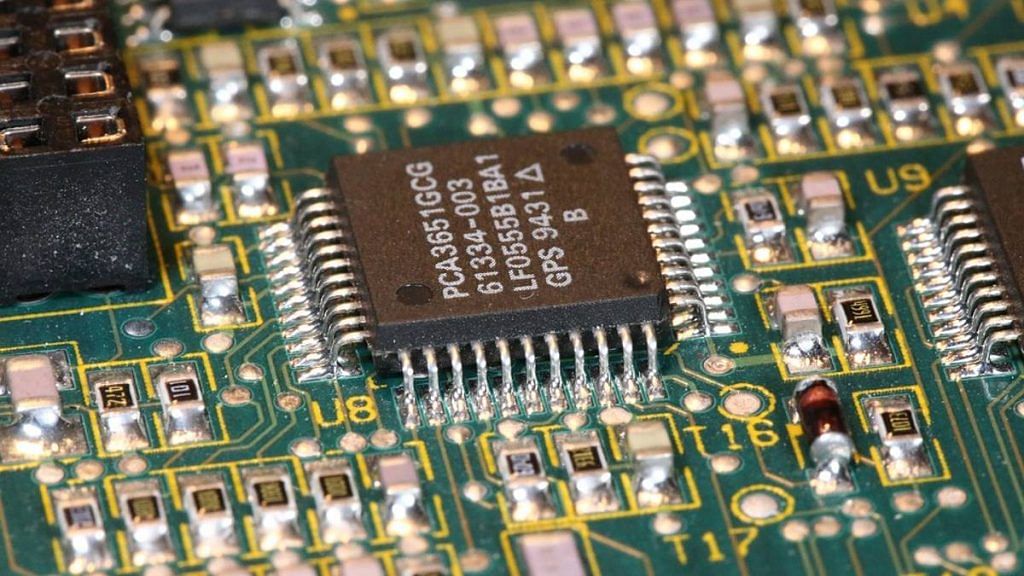New Delhi: The Ministry of Electronics and Information Technology (MeitY) Vision Document released Monday, aiming at developing the country’s electronics manufacturing sector, lays out regulatory and other challenges that stop businesses from reaching their full potential.
The challenges listed in the document include how India has the highest tariffs on import of components for electronic products, compared to competing electronics hubs like China and Vietnam. Other challenges listed include “regulatory uncertainty”, and “punitive duty structures and tax levies”.
The document is the second volume of a ‘Vision Document’, laying out a roadmap and strategies to make India’s electronics manufacturing sector increase its value to $300 billion by 2026, from the current $75 billion.
The document was unveiled by both Union IT minister Ashwini Vaishnaw and Minister of State for IT Rajeev Chandrasekhar.
It has been released by the MeitY, in association with industry body India Cellular and Electronics Association (ICEA).
The first volume of the Vision Document was released in November 2021 and discussed how India’s share of electronic exports and its role in the global supply chain for electronics can be increased.
Also read: Successful restart for the electronics industry in India
‘Challenges of infrastructure, tariff, FTAs’
In a section listing the challenges the electronics sector faces in reaching the goal of a $300 billion industry, the Vision Document says, “While the policy initiatives of the government have had a positive impact on the manufacturing ecosystem, the disabilities have persisted by and large”.
The document says challenges related to infrastructure, tariffs, and Free Trade Agreements must be resolved to make manufacturing in India “resilient, globally competitive and able to undertake operations at a massive scale”.
In a table comparing India, Vietnam and China for factors that lead to cost reduction in electronics manufacturing, the document shows that Vietnam and China have more favourable subsidy structures than India does in areas like machinery used for manufacturing, and research & development.
The document does concede that these cost factors are based on a 2018 analysis and that since then, cost gaps are “estimated” to have narrowed due to factors like China experiencing power shortages. But the document maintains, “These disabilities impact the competitiveness of manufacturing electronics in India vis-à-vis China and Vietnam”.
Lack of component ecosystem, high import costs
Another challenge is India lacking a robust ecosystem of companies locally manufacturing components required for electronic products.
“In the absence of a full-fledged component ecosystem in India, these components are required to be imported that results in increased costs and lead time for the manufacturers…. Moreover, India even lacks in manufacturing of components that are labour intensive and are feasible to manufacture in India, given the availability of cheap and skilled manpower. An active policy support to promote local manufacturing, including through domestic players, appears to be missing at present,” the Vision Document says.
High cost of importing these components is listed as a challenge.
“When compared to its Asian peers, India imposes the highest tariffs on inputs of electronic products and such tariffs continue to be subject to amendments frequently”.
The document points to places where ‘ease of doing business’ can be increased.
“In the policy initiatives and schemes of the government, the cost of land is not factored in…the cumbersome process of land acquisition overall acts as a deterrent for quick setting up of a manufacturing unit.”
‘No income tax holidays’ in India for sector
Another challenge is that China and Vietnam “readily provide” resources like buildings and dormitories to manufacturers, and even “the regulatory compliances are undertaken by the government authorities”. India does not take such initiatives.
A lack of Free Trade Agreements with developed countries is another challenge for the sector, the document adds.
“Punitive duty structures and tax levies” is another challenge to the growth of the Indian electronic manufacturing sector.
The document observes that encouraging growth of the local sector by discouraging imports via higher tariffs may not work, since manufacturers may leave the country. Sony and Xiaomi closed their units in Brazil due to high tax levies, the document notes.
Taxation in India is another challenge. Compared to China and Vietnam, India provides “lower income tax exemptions and reductions to electronics manufacturers”.
“No income tax holidays are being provided in India unlike those provided in Vietnam.…Vietnam also offers very long term predictability of 10-30 years of Income Tax holiday/concessional rates,” the document notes.
(Edited by Saikat Niyogi)
Also read: At least a dozen chip-makers to start setting up India factories in 2-3 years: IT Minister
